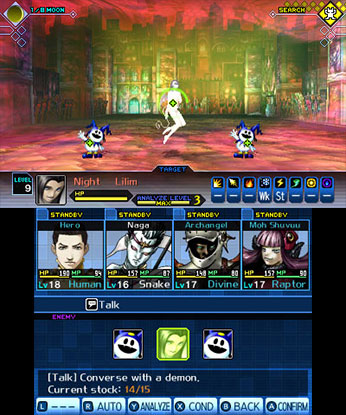Review by Clark A.
Strange Journey’s story seems deceptively straightforward. The player controls an unnamed soldier (or rather, player-named) sent by the United Nations to save the world from a mysterious calamity known as the Schwarzwelt. Said calamity is slowly expanding outward from the South Pole, so you’ll have to pay a visit to an alternate, warped Antarctica to investigate. Did I mention there are demons? The game’s opening does a good job of depicting the kind of chaos that is unfolding in the world as a result. Through bickering world powers and representatives, we learn very specific details about the events on, say, the economy of South America and the fish population in Central Asia. The media is even pushing fake news to prevent mass hysteria.
– Clark A.
Anime Editor














